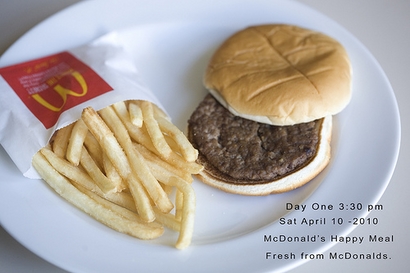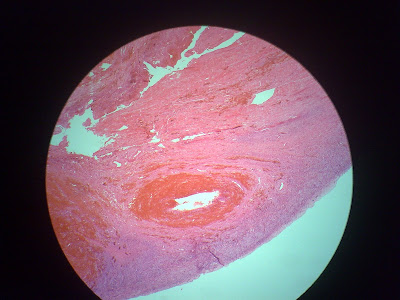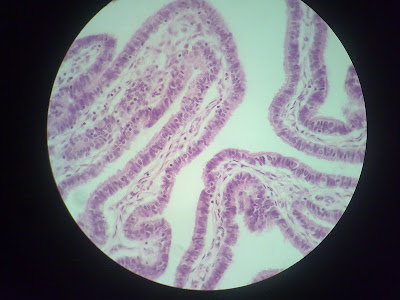Artikel daripada: Facebook
Bacalah untuk menilai sejauh mana kesihatan diri anda :-
1. MATA (Bertindak balas dengan keadaan hati)
a) Mata menjadi merah : Hati mengandungi paras toksin yang tinggi.Mata menjadi merah menandakan badan Kita sedang dalam proses pembuangan toksin.
Mata menjadi kabur : Sering berlaku pada waktu pagi. Menandakan proses penyeimbangan hati sedang berlaku.
b) Keluar tahi mata : Fungsi hati lemah, pembuangan toksin sedang berlaku. Ini juga menunjukkan badan mengandungi asid berlebihan.
c) Keluar air mata : Gangguan emosi yang bersangkut dengan hati atau bebanan kerja.
d) Ketegangan Mata Dan kelopak : Tekanan perasaan kerana tidak puas hati atau bebanan yang berat.
2. HIDUNG (Hidung mempunyai hubungan rapat dengan paru-paru dan kerongkong)
a) Selesema : Proses pembuangan toksin di bahagian kerongkong. Badan mengandungi asid berlebihan (biasanya suhu badan meningkat).
b) Hidung sumbat : Paru-paru mengandungi toksin yang berlebihan. Proses menyeimbangkan masalah alahan hidung.
c) Bersin
i· Proses membuang toksin di bahagian kerongkong.
ii· Proses menyeimbangkan masalah alahan hidung.
3. BATUK a) Batuk keluar kahak : Proses membuang toksin di bahagian kerongkong.
b) Batuk tanpa kahak : Paru-paru mengandungi toksin yang berlebihan. Biasanya kahak pekat keluar selepas beberapa Hari memakan RG..
c) Batuk Dan berasa gatal di kerongkong : Proses membuang toksin di bahagian kerongkong Dan paru-paru, biasanya berlaku pada orang yang banyak merokok atau terdedah kepada udara yang tercemar.
4. KERONGKONG
a) Kerongkong kering. Proses membuang toksin sedang berlaku di seluruh badan. Ini adalah tanda bahawa badan Kita memerlukan banyak air untuk membuang toksin.
b) Sakit kerongkong. Seperti di atas. Paras keracunan lebih serius.
5. BIBIR (Berkaitan dengan fungsi sistem penghadaman)
a) Bibir pucat
i. Sistem penghadaman yang lemah.
ii. Perut mengandungi angin.
iii. Kurang darah yang disebabkan oleh sistem penghadaman yang kurang sempurna Dan mengakibatkan kekurangan zat besi.
Sepatutnya diperkuatkan fungsi penghadaman dahulu dengan RG sebelum memakan zat besi.
b) Bibir kering Dan pecah. Perut mengandungi banyak bahan toksin.
6. MULUT DAN LIDAH (Berkaitan dengan fungsi jantung dan sistem pengedaran darah)
a) Lidah atau gusi bengkak, sakit : Menunjukkan jantung mempunyai masalah, seperti lemak yang berlebihan, injap menjadi lemah, saluran koronari tersumbat dan lain-lain lagi.
b) Lidah, tisu mulut atau gusi menjadi pecah-pecah (ulser). Menandakan darah mengandungi asid berlebihan.
c) Mulut berbau busuk . Proses penyeimbangan fungsi perut untuk pembuangan toksin.
7. TELINGA (Berkaitan dengan buah pinggang)
a) Telinga terasa tersumbat : Buah pinggang mengandungi toksin berlebihan.
b) Telinga berdengung : Sedang merawat buah pinggang yang lemah.Biasanya tapak kaki terasa sakit ketika bangun pagi Dan sakit itu hilang setelah berjalan-jalan.
8. KULIT BERPELUH :
a) Peluh masin : Badan mengandungi lebihan asid urik.
b) Peluh berbau : Badan menyingkirkan toksin melalui perpeluhan.
9. RUAM DAN BISUL
Badan menyingkirkan toksin yang berlemak dan toksin yang tidak larut dalam air.
10. KULIT GATAL DENGAN RUAM
Proses menyingkirkan toksin melalui kulit akibat terlalu banyak memakan ubat yang mengandungi bahan kimia.
11. KULIT PECAH DAN BERAIR
Proses pembuangan toksin yang larut dalam air.Sapukan serbuk Ganoderma pada kulit berkenaan.
12. RAMBUT GUGUR
Menandakan fungsi buah pinggang yang lemah. Selepas proses gugur, rambut akan umbuh semula dengan lebih sihat dan subur.
13. SENDI-SENDI, TANGAN DAN KAKI
a) Sakit Sendi
i. Rasa panas. Menunjukkan terdapat luka di bahagian sendi berkenaan & tanda- tanda penyakit pirai (gout).
ii. Tidak rasa panas .Tanda-tanda sakit lenguh (rheumatism) .
iii. Sakit di bahagian bahu. Menandakan saluran darah telah menjadi keras dan fungsi metabolisme tidak seimbang.
b) Kebas Tangan : Pengaliran darah di bahagian atas badan tidak lancar.
c) Kebas Tangan Kiri Dan Lengan : Tanda-tanda lemah atau sakit jantung. Jika rasa kebas menjadi sakit di bahagian lengan Dan kekal di sana , ini menandakan serangan sakit jantung mungkin berlaku.
d) Kebas Kaki : Pengaliran darah di bahagian bawah badan tidak lancar.
e) Sakit Tapak Kaki : Menandakan buah pinggang lemah. Biasanya disebabkan oleh kekurangan senaman Dan duduk terlalu lama.
f) Sakit Tumit Kaki : Menunjukkan kelemahan fungsi alat kelamin.
g) Rasa Panas Di Tapak Kaki : Penyeimbangan fungsi buah pinggang akibat lemah tenaga batin.
h) Gatal Celah-celah Jari Kaki : Menunjukkan tanda awal penyakit kaki busuk (Hong Kong Foot).
14. TANDA-TANDA DALAMAN
a) Kepala.Secara amnya, segala tindak balas yang berlaku di bahagian kepala mempunyai kaitan dengan sistem pengaliran darah, jantung Dan saraf otak.
b) Pening/Sakit Di Bahagian Depan KepalaMenandakan sakit tekanan jiwa (neurosis) akibat bebanan mental Dan banyak berfikir.
c) Pening/Sakit Di Bahagian Belakang Kepalai) Bahagian atas . Menunjukkan penyakit tekanan darah tinggi.ii) Bahagian bawah (tengkuk). Menunjukkan penyakit tekanan darah tinggi atau tekanan darah.
d) Sakit Kepala Dan Rasa Gas Keluar Dari Telinga :Menandakan penyakit migrain.
e) Bisul Terjadi Di KepalaTanda pembuangan toksin sedang berlaku. Kadang-kadang dikaitkan dengan penyakit migrain.
f) Rasa Pening Yang MemusingTanda kurang darah atau pengaliran darah tidak lancar.
15. MULUT/KERONGKONG/ LIDAH
a) Loya/Muntah : Tanda penyakit lelah.. Pembuangan bahan toksik dari bahagian perut.
b) Muntah Darahi. Darah merah : Pembuangan tisu yang sudah rosak di bahagian kerongkongii. Darah hitam: Pembuangan tisu yang sudah rosak di bahagian perut; misalnya penyakit ulser.
16. LIDAH RASA TEGANG DAN PENDEK
Tanda sakit jantung.
17. KELUAR AIR LIUR YANG PEKAT
Proses pembuangan toksin dari kerongkong akibat jangkitan kuman
18. KENCING
a) Kerap kencing : Menunjukkan buah pinggang mengandungi kotoran
b) Air kencing berkapur : Menunjukkan penyakit batu karang dalam buah pinggang.
c) Air kencing berminyak : Menunjukkan buah pinggang mengandungi kotoran berlemak.
d) Air kencing pekat berwarna coklat : Menandakan proses pembuangan toksin sedang berlaku.
e) Air kencing berdarah : Penyakit batu karang atau buah pinggang luka.
19. BUANG AIR BESAR
a) Cirit-Birit/ Kerap Buang Air Besar : Membersihkan kotoran/keracunan dari usus besar. Cirit-birit dengan serta merta selepas memakan RG, menandakan penyakit barah di bahagian usus besar.
b) Sembelit: Membersihkan toksin dari usus kecil.
c) Najis Berdarahi.
i . Darah merah : Masalah penyakit buasir atau barah di bahagian usus.
ii. Darah hitam: Masalah penyakit ulser perut.
d) Najis Berwarna Hitam : Menunjukkan proses pembuangan toksin di bahagian usus sedang berlaku.
20. BADAN
a) Rasa Sakit : Secara amnya, segala kesakitan badan adalah disebabkan?saluran darah.
i. Sakit menyucuk : Proses menyeimbangkan urat saraf.
ii. Sakit sengal: Menandakan luka di dalam badan
.iii. Sakit menyentap: Proses menyeimbangkan urat saraf yang berkaitan dengan organ-organ badan
.iv. Sakit menegang : Proses melancarkan pengaliran darah.
b) Badan Terasa Berat/ Malas/ Lenguh : Badan mengandungi asid yang berlebihan.
c) Badan Terasa Panas : Badan mengandungi asid yang berlebihan. Inimenandakan badan memerlukan banyak air untuk menjalankan proses pembuangan toksin.
d) Badan Terasa Ringan : Menandakan badan segar dan proses awet muda sedang berlaku.
21. RASA TAKUT MENGEJUT
Lemah fungsi buah pinggang. Tenaga batin lemah.
22. CEPAT NAIK DARAH/MARAH
Fungsi hati lemah. Tekanan darah tinggi.
23. RASA BIMBANG DAN TAKUT
Sistem paru-paru yang lemah.
24. RASA SERONOK ATAU BIMBANG TANPA SEBAB :
a) Sistem jantung yang lemah.
b) Sistem saraf otak yang lemah.
c) Masalah pengaliran darah.
25. SUKA BERFIKIR DAN BERKHAYAL
Sistem penghadaman yang lemah.
Selalulah berdoa agar kita sentiasa mendapat kesihatan tubuh badan yang baik. Jangan lupa untuk bersenam dan mengamalkan pemakanan yang sihat.. InsyaAllah
Kalau ada diantara pembaca ini seorang doktor, bolehlah sahkan info ini. Atau kalau ada yang boleh bertanya kepada mereka yang berkelayakan, tanyakan dan kongsi dengan kita semua, adakah info ini boleh dipakai atau tidak.
Wallahualam.
by: sya mtm

























































